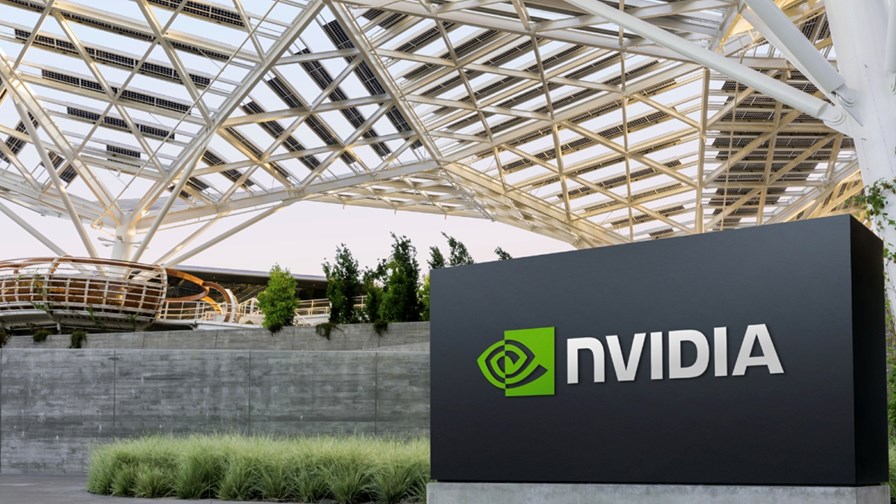
- AI chip giant Nvidia has reported its fiscal third-quarter results
- The numbers are not unexpected but still mind-boggling
- Revenues almost doubled year on year to reach $35.1bn
- Its hardware/software combo will help it retain its grip on the market for some time yet, reckons seasoned analyst
Anyone hoping to see Nvidia’s bubble burst will have been disappointed late Wednesday as the AI chip giant reported a 94% year-on-year increase in revenues to $35.1bn for the fiscal third quarter that ended in late October and a 110% year-on-year increase in operating profit to almost $21.9bn.
To put the numbers into even greater perspective, in the fiscal third quarter that ended in October 2022 – the equivalent period two years ago – Nvidia’s revenues were $5.9bn and its operating profit was $601m.
On a sequential basis, Nvidia’s third-quarter revenues were up by 17% from the $30bn it reported for its second quarter of the current fiscal year.
Datacentre product revenues account for the vast majority of Nvidia’s sales: In the third quarter, the datacentre division reported revenues of $30.8bn. It’s worth noting too that Nvidia is also growing its traction with the automotive sector, albeit from a relatively small base. The vendor’s sales to the automotive sector hit $449m in the third quarter, up 72% year on year.
“The age of AI is in full steam, propelling a global shift to Nvidia computing,” stated the company’s founder and CEO, Jensen Huang. “Demand for Hopper and anticipation for Blackwell – in full production – are incredible as foundation model makers scale pretraining, post-training and inference. AI is transforming every industry, company and country. Enterprises are adopting agentic AI to revolutionise workflows. Industrial robotics investments are surging with breakthroughs in physical AI. And countries have awakened to the importance of developing their national AI and infrastructure,” he added.
For now, the rollercoaster is still picking up speed and for a company that is already massive, those current growth numbers are extraordinary. But, of course, such levels of growth cannot continue indefinitely – at some point Nvidia’s revenues will hit a peak, not necessarily because demand tops out but partially because the capacity to produce the company’s physical chips reaches its limits.
And that point might be on the near horizon. Nvidia expects its fourth-quarter revenues to be around $37.5bn – which would be a sequential increase of $2.4bn, equal to about 6.8%. That forecast was enough to generate some disappointment in the investment community and Nvidia’s share price dipped slightly in after-hours trading on Wednesday to $143.39.
But to put that slight correction into perspective, Nvidia’s share price is up by about 200% this calendar year and the company currently has a market valuation of $3.5tn, which makes it worth about the same as Apple – these are the most highly valued companies in the world.
It’s interesting to note that, in presenting what it considers its business highlights since its second-quarter earnings report in late August, Nvidia called out a number of engagements with network operators and vendors from the telecom sector. These included the introduction of the AI Aerial solution for telcos, the formation of an AI-RAN Innovation Centre with T-Mobile US, Ericsson and Nokia, and its multiple engagements with Japan’s SoftBank, such as the 5G AI-RAN pilot announced on 13 November and the provision of Blackwell AI chips to “build Japan’s most powerful AI supercomputers”.
You can keep up with all the key developments in the telecom sector involving Nvidia on this dedicated TelecomTV page.
So how long will Nvidia’s dominance of the AI tech sector last? Experienced tech sector analyst Richard Windsor reckons the company has a while yet before others can start to eat away at its market share, not only because its chips are far superior to anything else currently available but also because its combination of hardware and software is unrivalled.
In his latest Radio Free Mobile blog, Windsor noted that Nvidia “continues to sweep its competition contemptuously to one side as the combination of the unique Cuda development platform, and being at least one generation ahead of everyone else, leads to interest in alternatives remaining low… from a competitive standpoint, Nvidia is in the clear for at least 2025 and maybe 2026 as well,” noted Windsor. His blog, which goes into more detail about the trends that will influence the AI tech sector and Nvidia’s position in it, is worth reading in full to get the overall picture (it takes less than five minutes to read).
Windsor also noted that some previously cited concerns about when the new Blackwell chip might become commercially available appear to have been unfounded, though he does suspect that it might take some time for the datacentre infrastructure that makes use of those chips to become operational.
- Ray Le Maistre, Editorial Director, TelecomTV
Email Newsletters
Sign up to receive TelecomTV's top news and videos, plus exclusive subscriber-only content direct to your inbox.




